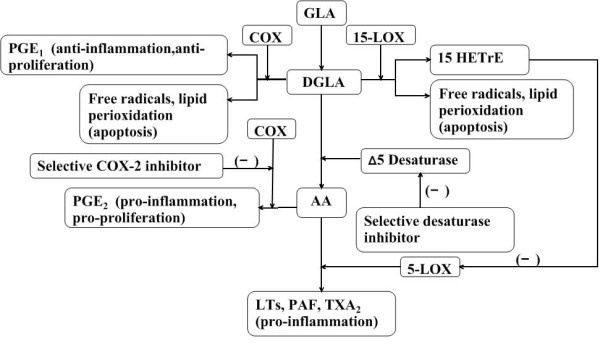Figure 3.

Mechanisms of dihomo-γ-linolenic acid in anti-proliferation of diseases. DGLA-derived PGE1 has been identified as possessing anti-inflammatory properties that differentiate it from AA-derived PGE2. DGLA could be metabolized into the 15-lipoxygenase product, 15-HETrE, which is capable of inhibiting the synthesis of AA-derived 5-lipoxygenase metabolites and further attenuates the pro-inflammatory products from AA. All types of free radicals (superoxide anion, H2O2, hydroxyl radicals) and lipid peroxides play a role in the induction of apoptosis of tumor cells by the metabolism of DGLA. Selective COX-2 inhibitor could stop AA from converting to PGE2 which are able to stimulate cancer cell proliferation. DGLA may be accumulated through blocking the conversion to AA mediated by selective desaturase inhibitor.
